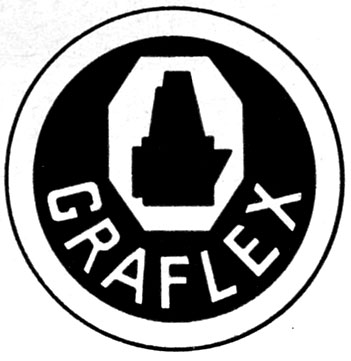

Early 19th century cameras did not need shutters because the light-sensitive material was so slow to react that the photographer simply removed the lens cap and timed the exposure with his watch. But as the "film" got more sensitive, they needed a mechanical shutter to time the exposures in fractions of a second.
Most shutters at the time (and many currently) were located right behind or within the lens itself, so when the shutter was closed, there was no image. The photographer would open the shutter, compose the image on a ground glass, then close the shutter, put the film in place, then trip the shutter to make the exposure.
But William Folmer invented a focal-plane shutter, which was set in the back of the camera next to the film. It was larger and clunkier, but it had several advantages. The first was that because it was at the rear of the camera, a mirror could be placed behind the lens so that the photographer could compose and focus the image, then flip the mirror out of the way and trip the shutter, and then drop the mirror back into position. Since the photographer didn't have to place the film into position after composition, it speed up the time between setting up the picture and taking it.
The other advantage was that it was fast. Mechanical lens shutters tended to top off around 1/100th at the turn of the century, while Folmer's focal-plane shutter could yeild 1/1000th.
In 1890, William Folmer and William Schwing made Folmer & Schwing. They began by making bicycles, but by the turn of the century, they were making their own cameras as well. They called them Graphic cameras, and the "reflex" camera, a Graphic with the mirror attached, was the "Graphic Reflex," shortened to Graflex. This would be the camera that put them on the map.
Eastman Kodak liked the company and bought it in 1905. Folmer & Schwing was blended with the Century Camera Company and it became the Folmer & Schwing Division of Eastman Kodak, where it would remain the next 20 years.
In the early part of the 20th century there was a time when the US Government thought huge corporations were actually a bad idea, and Kodak was huge. In the 20s Kodak had to divest itself of some of its assets, namely the Folmer-Century Divison. Unable to find a buyer, in 1926 it became an independent company called Folmer Graflex. In 1945 it would change its name to simply Graflex, Inc.
Graflex cameras were made for the working professonal, mainly in the studio. But they also found themselves making the camera of choice for photojournalists, the Crown Graphic and Speed Graphic. They were the same camera except that Speed Graphic had a focal plane shutter and the Crown Graphic did not. The Graphics of the time were relatively light-weight but very sturdy. They were remarkably versatile, were built to be used for fast-action work if necessary, and when fitted with the new flash-bulb attachments, they could do almost everything well.
But the Graflex company had a fatal flaw. The first was that it was never able to successfully diversify its line; its professional Graphic and Graflex cameras were its big sellers. And instead of continuing to compete in the commercial market by going against the great European makers like Rollei, they went down-market instead to compete in the amateur markets. Their Ciroflex and Century cameras weren't that good or desirable. And their attempts to import and cobrand Japanese cameras from Kowa and Norita did not pan out.
This wasn't a problem in the when their cameras were the choice of working professonals. But when the press and studio camera market shifted to miniature cameras like Nikon and Leica, or to the European medium format cameras from Rollei and Hasselblad, Graflex was had no answer. In 1966 it was pretty much over with; they were absorbed by Singer (most famous for its sewing machines) where it became the name of its audio/visual wing. Graflex introduced it's modular XL system but it never really caught on. By 1973 they had quietly disappeared.
Graflex is a registered trademark of Graflex, Inc. and is not affiliated with this website in any way.